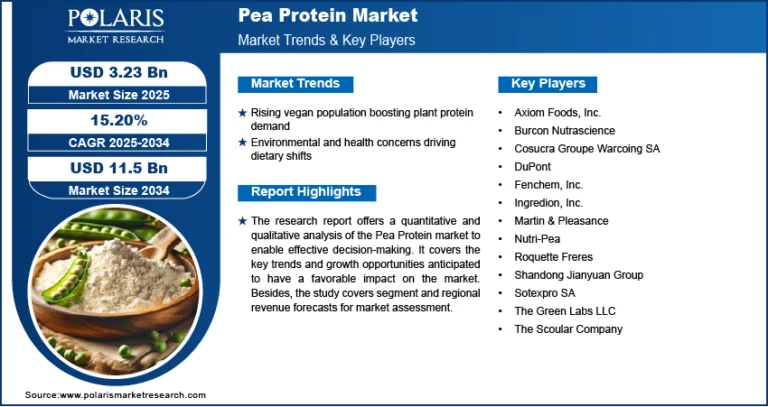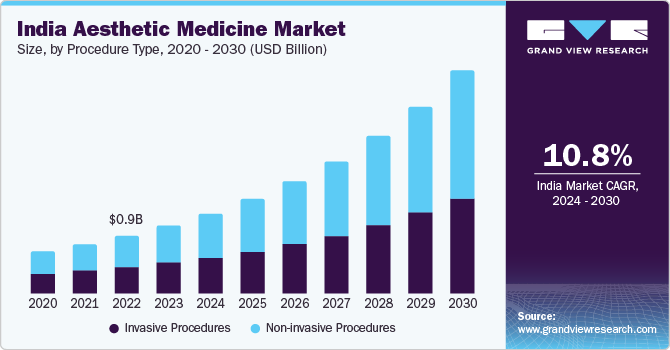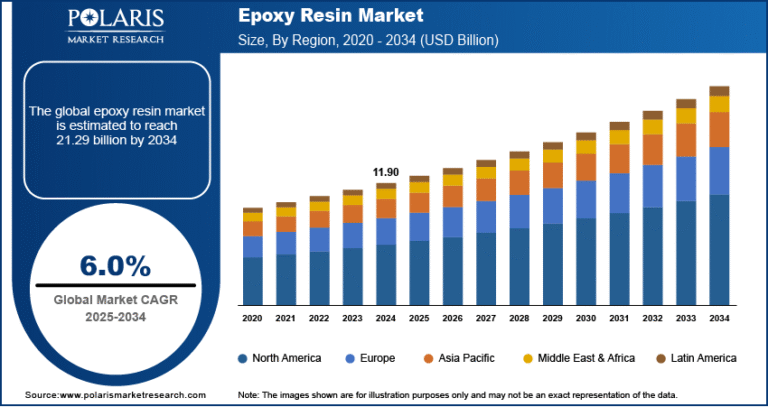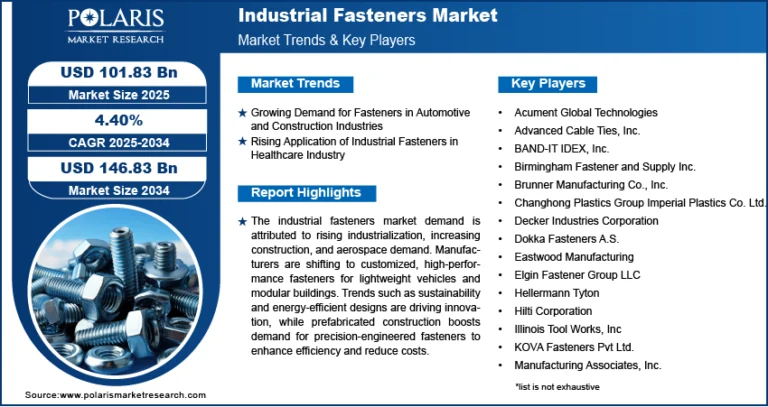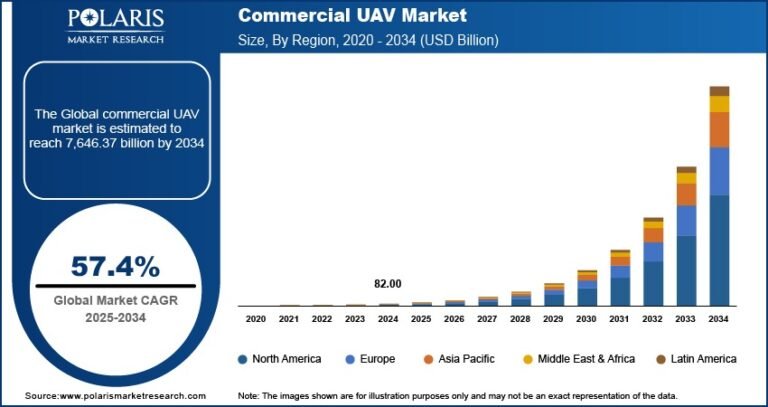Aircraft Fuel Systems Market Anticipated to Attain USD 19.60 Billion by 2034 | CAGR: 6.9%
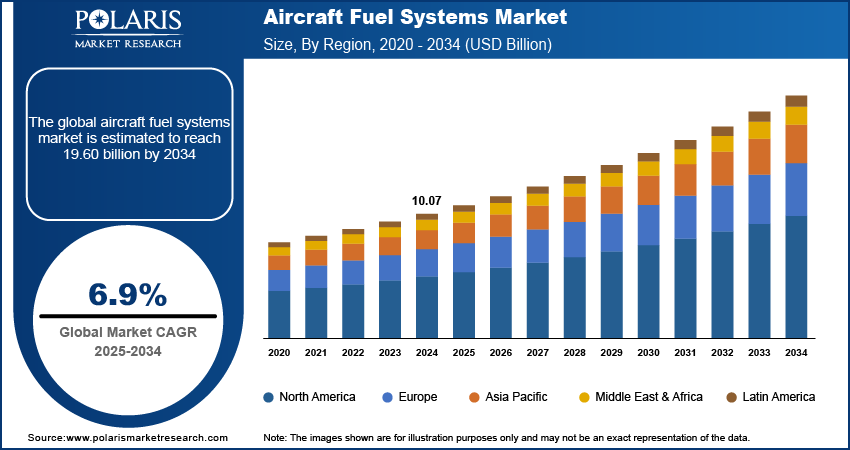
The aircraft fuel systems market was valued at USD 10.07 billion in 2024. It is projected to grow from USD 10.75 billion in 2025 to reach USD 19.60 billion by 2034, exhibiting a compound annual growth rate (CAGR) of 6.9% during the forecast period. This growth is driven by rising air travel, increasing demand for fuel-efficient technologies, and advancements in electric and hybrid propulsion systems.
Aircraft Fuel Systems Market Key Trends & Insights:
- Advanced Digital & Real-Time Fuel Management: Aircraft fuel systems are increasingly equipped with IoT sensors, AI tools, and analytics platforms that monitor fuel levels, pressure, temperature, and flow in real time. This helps improve fuel efficiency, ensures flight safety, and enables predictive maintenance.
- Integration of Sustainable & Alternative Fuels: With the aviation sector transitioning to sustainable aviation fuels, biofuels, hydrogen, and hybrid-electric propulsion, fuel systems are being redesigned to handle new fuel chemistries and support compatibility across multiple fuel types.
- Use of Lightweight Composite Materials: Components such as fuel tanks, pumps, valves, and pipelines are now being made with advanced composites like carbon fiber and titanium. These materials help reduce overall aircraft weight and contribute to improved fuel efficiency and range.
- Support for Hybrid, Electric, and UAV Aircraft: The emergence of hybrid-electric aircraft, fully electric planes, and unmanned aerial vehicles (UAVs) is driving demand for specialized fuel and energy systems. This includes hybrid energy storage, hydrogen fuel management, and modular fuel tank designs.
- Increased Demand from Defense & Aerial Refueling Applications: Military aircraft and tanker operations are pushing innovation in fuel system components that can handle high-capacity transfers, ensure reliability, and provide enhanced safety in extreme operational conditions.
Market Size & Forecast:
- Market size value in 2025 – USD 10.75 billion
- Revenue forecast in 2034 – USD 19.60 billion
- CAGR – 6.9% from 2025 – 2034
𝐆𝐞𝐭 𝐄𝐱𝐜𝐥𝐮𝐬𝐢𝐯𝐞 𝐒𝐚𝐦𝐩𝐥𝐞 𝐏𝐚𝐠𝐞𝐬 𝐨𝐟 𝐓𝐡𝐢𝐬 𝐑𝐞𝐩𝐨𝐫𝐭:
Aircraft Fuel Systems Market Overview:
The aircraft fuel systems market is experiencing robust growth driven by the aviation industry’s relentless focus on fuel efficiency, operational reliability, and safety. Advanced fuel system components such as tanks, pumps, valves, filters, and fuel management sensors are increasingly being integrated into both commercial and military aircraft to meet performance and regulatory standards. Modern aircraft demand lightweight, corrosion-resistant materials and smart system architectures that allow for precise fuel monitoring, distribution, and management. Innovations like modular fuel tank designs, electrically driven pumps, and real-time fuel analytics are enhancing overall aircraft performance and enabling more efficient flight operations. Additionally, the trend toward alternative fuels and hybrid-electric propulsion is prompting the development of fuel systems capable of handling different fuel chemistries and thermal properties.
Regional demand is strong across North America and Europe, where established aerospace hubs and retrofit programs drive ongoing upgrades and new installations. In Asia-Pacific, expanding airline fleets and modernization of aging regional aircraft are creating substantial growth opportunities for advanced fuel system solutions. Key industry players including OEMs, fuel system specialists, and MRO providers are forming strategic partnerships and investing in R&D to develop next-generation systems with enhanced safety features, adaptability, and lifecycle support. Regulatory focus on emissions reduction and fuel efficiency is also fueling the adoption of smart fuel management systems that support optimized flight planning and reduced environmental impact. As aircraft manufacturing ramps up globally, particularly with widebody and next-gen narrowbody platforms, demand for sophisticated fuel systems is expected to remain strong in the medium to long term.

